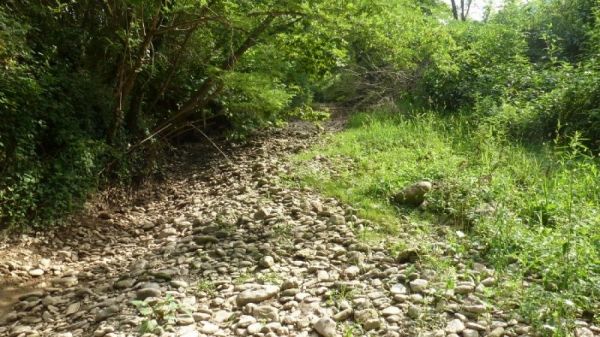2018: a year of drought – climate change causes an increase in the number of freshwaters that run dry, at least temporarily. Also, many lakes are shrinking permanently or have disappeared completely. Around 90,000 square kilometers of water surface have already vanished in the last 30 years. This trend is not only a threat to drinking water reserves and major ecosystems – dried freshwaters also play an important role in the global carbon cycle, and may be responsible for the release of CO2 and other climate-relevant gases. Two recently published studies undertaken with involvement of the Leibniz-Institute of Freshwater Ecology and Inland Fisheries (IGB) reveal that the importance of this phenomenon has so far been underrated.
A key element of the Assessment Reports published by the Intergovernmental Panel on Climate Change (IPCC) is the global carbon cycle: carbon (C) exists in several different forms in rock, soils, water, air, organisms and the atmosphere; continuous exchange processes occur between these spheres. Carbon in the form of CO2 acts as a greenhouse gas in the atmosphere. “When calculating fluxes of matter in the carbon cycle, some habitats are too complex to capture, which is why they are not considered separately in the IPCC Report,” explained Dr. Gabriel Singer, Leader of the IGB research group Fluvial Ecosystem Ecology and co-author of both studies. And yet rivers, lakes, ponds and streams that fall partially or completely dry, or that have falling water levels, may play a significant role in global CO2 emissions, as the team of authors show: when permanently dry lake sediments and seasonally dry surfaces of all different freshwaters are considered, estimates for CO2 fluxes from continental inland waters to the atmosphere must be increased by about 10%. As such, freshwaters play a more important role in the global carbon cycle than was previously assumed.
Lakes are considered to be carbon sinks – this is only true to a certain extent
The team analysed numerous publications that have contributed in recent years to determining CO2 emissions from freshwaters and their contribution to the carbon cycle, and the reasons for their increased desiccation. Strictly speaking, freshwaters, and lakes in particular, primarily act as C sinks – long-term carbon accumulation occurs in their sediments. If water levels fall, however, an increasing share of the lake bottom is exposed to atmospheric oxygen. The drier sediments become, the more aerobic respiration increases – dead organic matter in the lake bottom is used by bacteria, which leads in turn to the production of CO2. “Our analysis shows that lakes should not be considered just as C sinks; on the contrary, they emit gaseous carbon when they fall dry,” emphasised Gabriel Singer. These effects are likely to increase in importance under a changing climate: on a global scale, for example, around 90,000 square kilometres of water surface have vanished completely in the last 30 years.
Read more at Forschungsverbund Berlin e.V.
Photo: Dried freshwaters also play an important role in the global carbon cycle, and may be responsible for the release of CO2 and other climate-relevant gases. CREDIT: Rafa Marce


